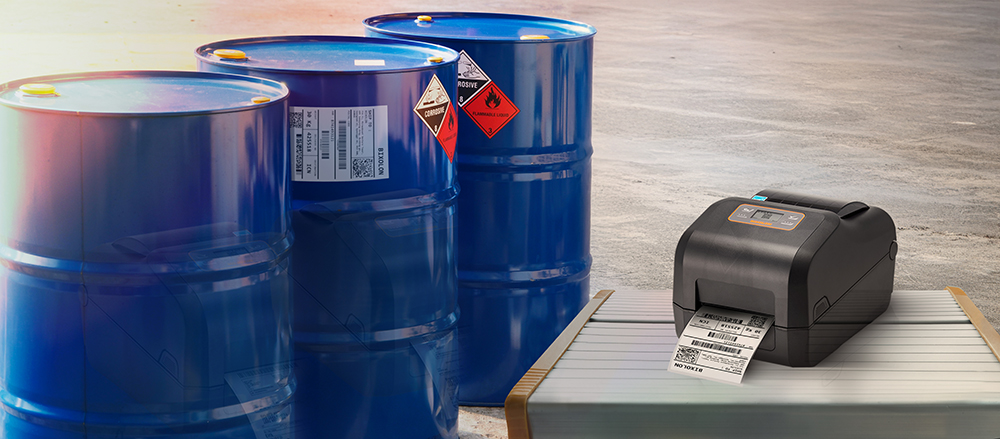When it comes to operating in an environment where an explosion, fire or other hazardous incidents can occur, critical communication is something you can’t take for granted. But in an environment where mobile phones are a no-go, physical structures create coverage challenges, and workers are located across a vast amount of space and locations, it can be a tough task to get right. Here we highlight some of the most common pain points businesses and workers face in an ATEX environment – and how the following solutions will benefit your business from a safety, productivity, and efficiency perspective.
Safety
Pain point – having the right device for an ATEX environment
Much like a mobile phone, having the right device for the end user is essential. Whilst having the ability to use a smartphone on-site would be handy for most, it’s not a viable solution in an ATEX environment.
Solution – use ATEX approved hardware
With advanced ergonomics, ATEX certified two-way radios can withstand being dropped, and are built for different gas protection and dust protection zones.
You can use an ATEX Non-Keypad or Full Keypad device for a range of safety features, large, easy to press buttons – handy for workers wearing gloves – and integrated GPS for location tracking.
The latest radios also have batteries that can last throughout a working shift.
Heavy-duty headsets can also be used in noisy environments, giving workers the ability to consistently make and receive radio calls without background noises impacting their work.
Pain point – keeping workers safe at all times
The safety of workers, especially those working in an isolated setting, is paramount for any business. If someone falls, suffers a serious injury or health problem – how do you get there in good time or know to even react to an incident in the first place?
It’s estimated that the cost of injuries and ill health from working conditions in the UK is a staggering £16.2 billion. According to a recent Labour Force Survey, 693,000 non-fatal injuries are sustained by workers, and from that, 168,000 of them resulted in injuries with over seven days absence.
Solution – use personal safety features
With no mobile phone to turn to, the device a worker uses must be a potentially lifesaving tool. ATEX radios are equipped with emergency features like Lone Worker, Man Down and Panic Button.
Lone Worker – features an emergency alarm that can be activated to alert others and worker whereabouts can be tracked with GPS.
Man Down – features an integrated accelerometer that senses when a user has fallen or not moved for a set period.
Panic Button – features an emergency button that requires one touch to alert others of a serious problem.
Pain point – having good coverage across site(s)
Having good coverage sounds like a simple task, but when you factor in ‘blind spots’, blast-proof buildings made from dense steel, underground storage facilities, multi-storey structures, and the need to communicate across multiple sites, suddenly you have a list of obstacles to overcome.
The UK’s largest refinery and chemical manufacturing site is set across approximately 142 million square feet. That’s nearly twice the size of Gibraltar.
And in 2020, 6.5 billion minutes’ worth of business calls were made – highlighting the importance of good coverage.
Solution – a seamless network infrastructure
To ensure you experience secure and uninterrupted coverage that helps keep people safe, a seamless network infrastructure must be in place – one that can combat physical obstacles and virtual ones like channel interference.
Setting up a seamless network infrastructure can be a complex process, that’s why having a team of experts who can advise you on the best solution for your business is crucial.
Pain point – sending alarm notifications to workers on-site
Ensuring alarm notifications, and general plant updates, are sent to all workers without delay can feel like an impossible task without a smart, intuitive solution to rely on.
On top of the estimated costs of workplace injuries, statistics show that the Health and Safety Executive prosecuted 325 cases last year for failing to keep people safe. There were also 14 fatalities where a worker had come into contact with machinery.
Solution – Use Extended Alarm Management
With a solution known as Extended Alarm Management, you can connect all devices to an integrated DCS system that will send daily task reminders, location triggered alarms and alerts via SMS and email – enabling teams to respond rapidly.
You can also integrate critical machinery and site alarms – so you know exactly when machinery has gone down or needs attention.
Productivity
Pain point – upgrading a paper-based workflow system
From a productivity point of view, it’s important to have a workflow system that can capture job tasks, monitor progress, and alert workers to dates and deadlines. But if processes are relying on paper, it can be a tricky situation to be in.
Solution – use Job Ticketing software
With Job Ticketing software, you can create and monitor tasks, keep an itemised log, set due dates and times, and send out notifications when a task is ready to be set or complete.
Pain point – how do we contact people off-site?
From a productivity perspective, the need to for everyone within a business to stay connected is crucial. If someone can’t do their job because they can’t get through to someone off-site, or vice versa, then it’s a problem that needs fixing.
Solution – use Telephone Interconnect
The solution to the problem is Telephone Interconnect. The software essentially turns a radio into a mobile phone as it allows workers, who use intrinsically safe radios, to make calls to mobile phones and telephones that are located off-site and part of the same network.
Pain point – how do we operate machinery and a radio at once?
Operating machinery or working on equipment, whilst using a two-way radio, can be a stop-start process if you need to press buttons to speak.
Solution – use VOX (Voice Activated Communications)
When work requires a hands-on approach, use VOX (Voice Activated Communications) to respond to requests using a hands-free compatible headset. This means you can carry on with other tasks whilst talking.
Pain point – workers keeping a radio on their belt and still talking
It’s common for workers to carry around multiple tools with them by attaching them to a secure belt. But how do you carry a radio around and use it without having to constantly detach and re-attach it?
Solution – use a remote speaker microphone
When it comes to having quick access to Push-to-Talk applications on your radio, without having to spend time re-adjusting a belt, a remote speaker microphone is the perfect solution.
Slimline in build, they include a long-lasting battery and technology that provides clear, effective audio, meaning productivity doesn’t ever suffer.
Efficiency
Pain point – hearing each other in a noisy environment
Like any conversation between multiple users, being able to hear each other is essential. But life on a site where noise is consistently loud, it can become a real source of frustration, especially when workers must wait for quiet times to communicate.
Solution – Use Intelligent Audio to be heard loud and clear
Intelligent Audio is the ideal solution for loud and clear critical communication. The feature allows the noise of the radio to be automatically adjusted in line with fluctuating background noises.
Pain point – getting messages out to workers at speed
When you have multiple workers on multiple sites, it can be a time-consuming process to get messages to them one-by-one, especially if they convey critical updates.
Solution – use text messaging
ATEX Full Keypad Radios have the capability to receive both text messages and emails direct to the device – from sources like a tablet or desktop computer. This helps to provide end users with critical updates in a timely fashion without the need to constantly pick up the phone.
Whilst ATEX Non-Keypad Radios don’t contain a digital screen, you can still send text messages to these devices, with a handy Text-to-Speech feature.
Pain point – programming radios without any issues
Much like purchasing a mobile phone, it’s important to ensure radios are programmed correctly and working to their full potential. But when you’re not familiar with all the buttons and features, it may feel like a daunting thing to get right.
Solution – choose over the air programming
Over the air programming is something that continues to boom in popularity. You’ll find it being used to programme and Tesla’s in-car software and features, and you’ll also find it being used to update the software and features of ATEX two-way radios.
Using remote monitoring facilities changes and upgrades can be made to individual radios, without the need to visit various site locations. All changes are made instantly, helping to reduce costs and the time taken to programme your devices.
Pain point – managing systems without them failing
The internal management of voice and data systems can feel like an overwhelming prospect, especially if systems fail or need urgent attention.
Solution – choose comprehensive support services
Opting for a solution and service that provides end-to-end management of system failures, on-site support for system issues, capacity and coverage optimisation, disaster recovery planning will put you on the right path for achieving business success from a two-way communication perspective.
Eemits Communications are specialists in digital two-way radio solutions and work across chemical manufacturing, transforming site safety, productivity, and efficiency in the process.
eemits.co.uk









